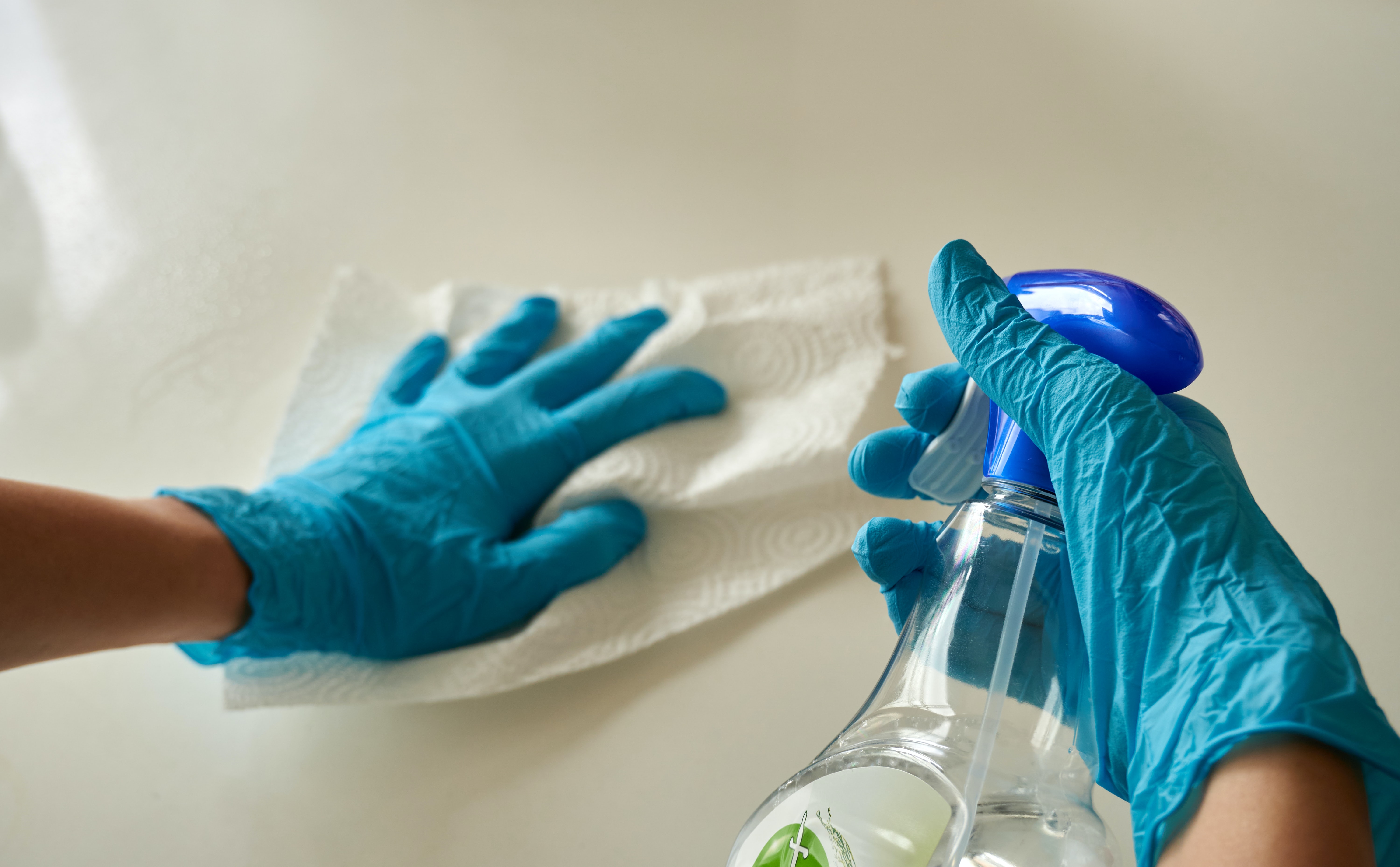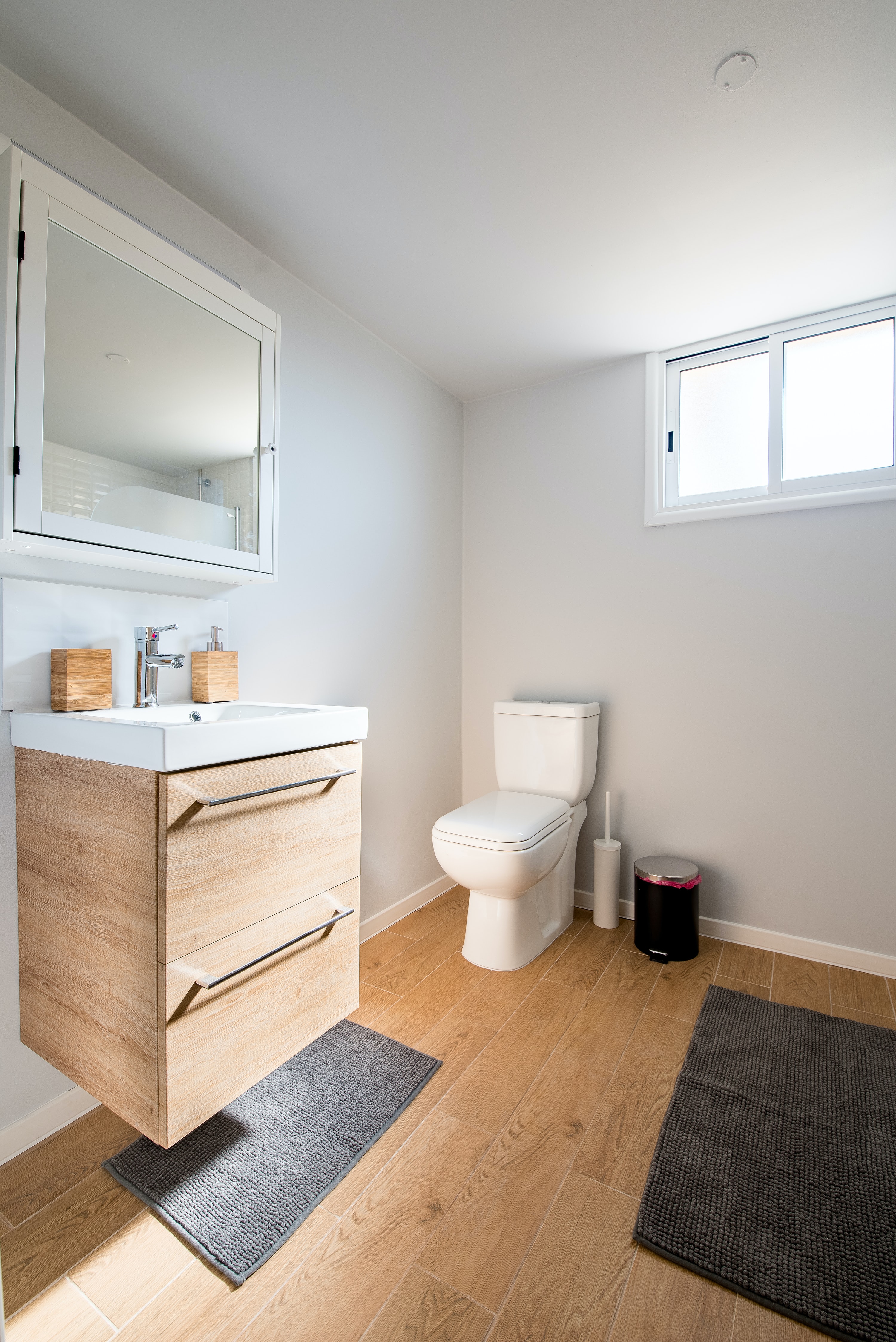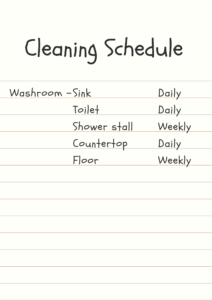I remember growing up in a small village in my homeland of Trinidad, Saturday was the cleaning day and Sunday was the church and rest day.
Every Saturday morning, my grandparents would be up bright and early. By 6 am Pappy, dressed in his yard clothes was outside cutting grass with a cutlass while Granny was cooking stewed chicken and rice for lunch – some of that delicious stew we would have with hot homemade bread for breakfast. After, breakfast and washing up, it was time for the weekly chores.
The windows and curtains were opened to invite in the fresh morning air and brilliant sunbeams. The minute we opened the eastern bedroom windows there were the neighbours, the two kindly older ladies that lived next to us, ‘sending right’ (waving) with the usual courtesies, “Mawnin neighbs!”. One was sweeping their upstairs gallery and the other was out by the front lawn tending to their gorgeous, well-kept rose garden.
Across the road, uncle Robert was just starting up his lawn mower and the air already smelled of freshly cut grass. Everybody was up and about!
There was so much vibrant energy around and everyone in the neighbourhood was doing their part. Ah, the good old days!

Although Saturdays saw the family coming together to do the majority of the deep cleaning, my grandparents both had daily cleaning and tidying rituals built into their routines that helped to keep the home orderly and visitor-ready. I always admired this.
Unfortunately, by the time I was old enough to really appreciate the amount of care and consideration that went into their love of taking care of the home, they were both well into the autumn of their years. I would have loved to learn much more from them.
I have fond memories of cleaning with my grandparents growing up as a very young child. Helping Granny ‘dust the chairs’ and helping Pappy sweep up the guava leaves in the yard with a cocoyea broom.
Life has changed so much since then!
Now we live in a fast world – fast food, fast entertainment, emails, social media, and just well…. busyness! Along the way we have lost track of so many aspects of ourselves, our homes are being neglected, our diets have changed from nutritious wholesome food to convenience foods laden with chemicals, exercise is a trip from the bedroom to the kitchen (hardly anyone even walks to the mailbox anymore) and on and on.
Not to mention, we moms have lots on our plates, taking care of our children and families, and some of us working to bring in an income as well. It can all be so exhausting. How can we get it all done?
The truth is we can’t do everything, but we can prioritise and do what is important – little by little, step by step and we will get there.
One aspect that I know a lot of moms struggle with is keeping the home clean.
The Importance of A Clean Environment
Jordan Peterson, Canadian psychologist, professor and author of 12 Rules For Life, An Antidote to Chaos, one of his biggest pieces of advice for an improved sense of mental well-being, is to ‘clean your room’. How true this is!
Our environment is an extension of ourselves and it affects our energy on multiple levels. In my own experience, a cluttered room or a sink overflowing with dirty dishes causes me anxiety.
Studies done over the years have shown that living in a cluttered, dirty and disorganized environment can lead to depression, fatigue, lack of focus and a decline in health.
Especially now in the times in which we live, where hygiene and cleanliness are emphasized to prevent the spreading of harmful germs, viruses and bacteria, it is important to keep our homes clean. It also helps to prevent vermin such as rats and cockroaches who may be looking for the perfect environment to raise their families.
Out of so many other factors in life that we may have little control over, the cleanliness of our home is one thing that we can control.
So how do we make progress toward a more organized, tidier home without feeling overwhelmed? Follow a cleaning schedule.
What is a Cleaning Schedule and Why Should You Have One?
A cleaning schedule is a written plan to accomplish cleaning tasks that need to be completed to achieve a level of cleanliness.
It is beneficial to have a cleaning schedule to:
- Reduce stress associated with cleaning
- Organize tasks by frequency – daily, weekly, monthly, seasonally etc.
- Eliminate decision fatigue and confusion
- Maintain order around the home
- Make tasks quick and efficient if you know what comes next and what it entails
- Get family on board where everyone knows their duty
The main key to creating a cleaning schedule is to make it realistic for you and your family.
How to Create A Cleaning Schedule
Divide Each Room into Areas or Components
The first step is to identify the individual rooms/spaces that need to be cleaned and maintained.
Start with your first room, let’s use the washroom as an example. Do a walk-through of the area and also take a picture to examine the different components of the room that require cleaning.
The washroom could be divided into the shower stall, toilet, sink, countertop, mirror and floor depending on your layout. Identify then write down each area to be cleaned.

Determine How Often Each Part Needs to Be Cleaned – Frequency
For example, the shower stall and mirror could be cleaned once a week, while the toilet, sink and counter may need daily cleaning.
Your initial list may look something like this:

Create A Master List of Tasks
Here is a simple template that you can use to get you started creating your schedule.
Make your master list detailing all the tasks that need to be carried out in each room, and how often they should be done to achieve a standard of cleanliness.
Assign Days and Times To Family Members to Complete Tasks
If you have family members who can and are willing to assist and do their part in keeping the home tidy, communicate with them about the new cleaning schedule and assign tasks to them to help with the upkeep of the home. As well, if you are single or a single parent with young children, space out the chores in a way that is suitable and realistic to you to avoid burnout and overwhelm. We’re just doing our best out here.

Make a note of the assigned tasks and post it somewhere in the home that everyone has access to see who has what chores/tasks to do on which day.
Make a List of Cleaning Supplies and Tools that Will be Needed
Different areas of the home may require different cleaning agents and tools. Make a list of the items you would need to get the job done. Mop, broom, dustpan, buckets, sponges, all-purpose cleaner, cleaning cloths, dishwashing liquid, disinfectant etc. You don’t have to go on a shopping spree but just ensure that you have the basics on hand.
Create Index Card System
I have found that the Index Card system is a very valuable part of the cleaning scheduling process.
Essentially, this is where the daily tasks for each room are written on an index card and placed somewhere safe in the room to be cleaned. These tasks are more of a quick spruce up and not a deep clean and should fit into a fifteen-minute time block.
Anytime I am ready to do a quick 15-minute clean in the bathroom, for example, I grab my supplies, the index card telling me exactly what needs to be done, I set my timer and go for it! By the time, I’m done the bathroom is sparkling! For me, trying to beat the timer adds to the motivation to get it finished!
Get an index card for each room and write the daily tasks for that room on it. Place it in an area of the room where it would be safe and dry, such as in a drawer or pinned to a pegboard but where you would have easy access to it. When it is time to clean, gather your cleaning tools, set a timer for 15 minutes and see if you can complete the daily tasks within the time.
Every time you need to clean a particular room, your checklist is always handy on an index card nearby. No hassle, no worries, just follow what’s on the card!
Try Out Your New Cleaning Schedule and Improve as You Go Along
Now it’s time to implement the cleaning schedule. Bring the family on board and test it out for a week. Some family members may want to switch up tasks or offer suggestions to get things done more efficiently.
You yourself may realize that some tasks should be done before others and the order should be changed. For example, you may find that you can put the toilet bowl cleaner in the toilet first and let it work while you clean the sink and the countertop in the washroom.
Most of all have fun with it!
Here are a few tips to make cleaning easier and more pleasant:
- Listen to your favourite music while you clean –, jazz, soca, techno, pop – whatever gets your energy up. Also, you can press play on your favourite audiobook or podcast.
- Put your favourite essential oil in a diffuser or light some incense, or use the old-fashioned way of boiling cinnamon and orange peel on the stove.
- Use a timer – make it fun among family members to complete their chores before time runs out.
- Use a caddy to carry around your cleaning tools and also place cleaning items in areas where they can be easily accessed to avoid delays when running from one room to another. For example, store the multipurpose cleaner for the bathroom under the bathroom sink rather than in the kitchen.
- Do two-minute tasks – on days when you feel overwhelmed or can’t find time to get everything done, simply do small two-minute tasks to help move the needle. Little by little you will get there.
Forget about perfection!
Just do your best. If you missed a spot today, you will get it tomorrow.
Keep at it and eventually, you will memorize the steps to clean a room and it becomes a habit. Next thing you know, much of the stress is gone and keeping a (mostly) tidy home is part of the norm.
What about you? Do you have any cleaning and tidying tips to share?
